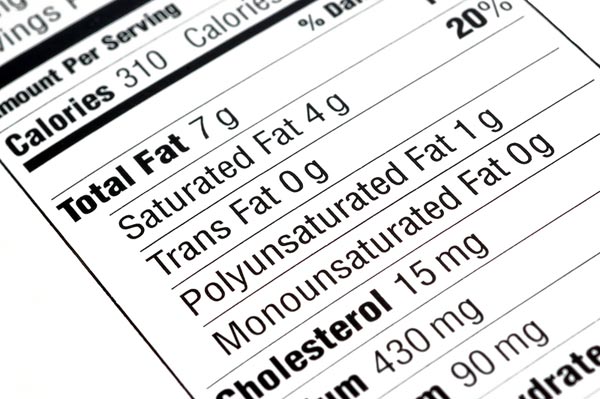New Nutrition Labels: 5 Big Changes to Look For

The nutrition labels on packaged foods will likely get a makeover in the coming years, according to the Food and Drug Administration.
Today (Feb. 27) the agency announced proposed changes to the labels, to reflect the latest nutrition science and the growing understanding of the link between our diet and chronic diseases such as obesity and heart disease, the FDA said. The labels were first introduced in the 1990s, and were last updated in 2006 to add information about trans fat. [Nutrition Facts Label: Proposed FDA Changes (Infographic)]
Here are five things you should know about the new labels.
More realistic serving sizes
One of the biggest changes the FDA is proposing is to update the serving sizes on the labels, so they better reflect what people actually eat, the FDA said. People eat more today than they did 20 years ago, when the labels were created, but serving sizes listed on packages have largely remained the same.
In the new labels, the amount that's listed as a single serving would change for some products. For example, a single serving of ice cream is currently listed as half a cup, but the new labels would list the serving size as a full cup, the FDA said.
And products that could be consumed in one sitting, such as a bottle of soda, will be considered one serving. This means that both 12- and 20-ounce bottles of soda would both be considered one serving, because people usually drink the whole bottle in either case, the FDA said.
Get the world’s most fascinating discoveries delivered straight to your inbox.
You'll see added sugars
Instead of having a single line for the total amount of sugar, the new nutrition labels would have two: "Sugars" and "Added Sugars," the FDA said. The addition of "Added Sugars" (sugars that are added as part of the production process) goes along with the government's recommendation that consumers should eat less added sugars.
The FDA said this decision was made to make consumers more aware of how much sugar occurs naturally in a product, and how much has been added. On average, Americans consume about 16 percent of their daily calories from sugar, from products such as sugar-sweetened beverages and desserts, but the World Health Organization recommends that people limit their added sugar intake to just 10 percent of daily calories.
New design emphasizes calories
The new labels would emphasize calorie information by making the font bigger, and boldface. The servings per container would also be bolded.
"To help address obesity, one of the most important public health problems facing our country, the proposed label would drive attention to calories and serving sizes," Michael R. Taylor, the FDA's deputy commissioner for foods and veterinary medicine, said in a statement.
You won't see "calories from fat"
The new labels would take out "Calories from Fat," that currently appears next to calorie information. This decision was made because studies show the type of fat, rather than the amount, is more important for health, the FDA said. Consumers should look for products lower in saturated and trans fats, the FDA said.
You won't see changes right away
Once the changes to nutrition labels are finalized, food manufacturers will have two years to comply with the new requirements, the FDA said.
Follow Rachael Rettner @RachaelRettner. Follow Live Science @livescience, Facebook & Google+. Original article on Live Science.

Rachael is a Live Science contributor, and was a former channel editor and senior writer for Live Science between 2010 and 2022. She has a master's degree in journalism from New York University's Science, Health and Environmental Reporting Program. She also holds a B.S. in molecular biology and an M.S. in biology from the University of California, San Diego. Her work has appeared in Scienceline, The Washington Post and Scientific American.


